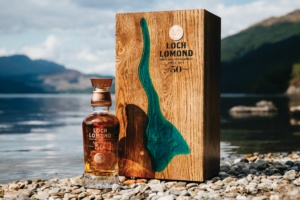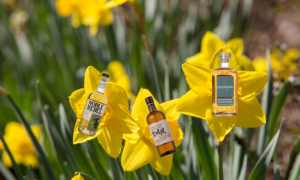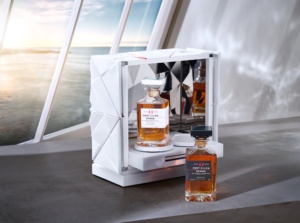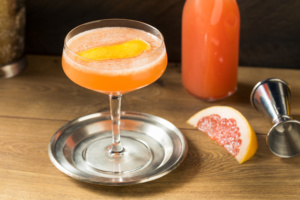Collateral Dram-age: America, Tariffs and Trade Wars
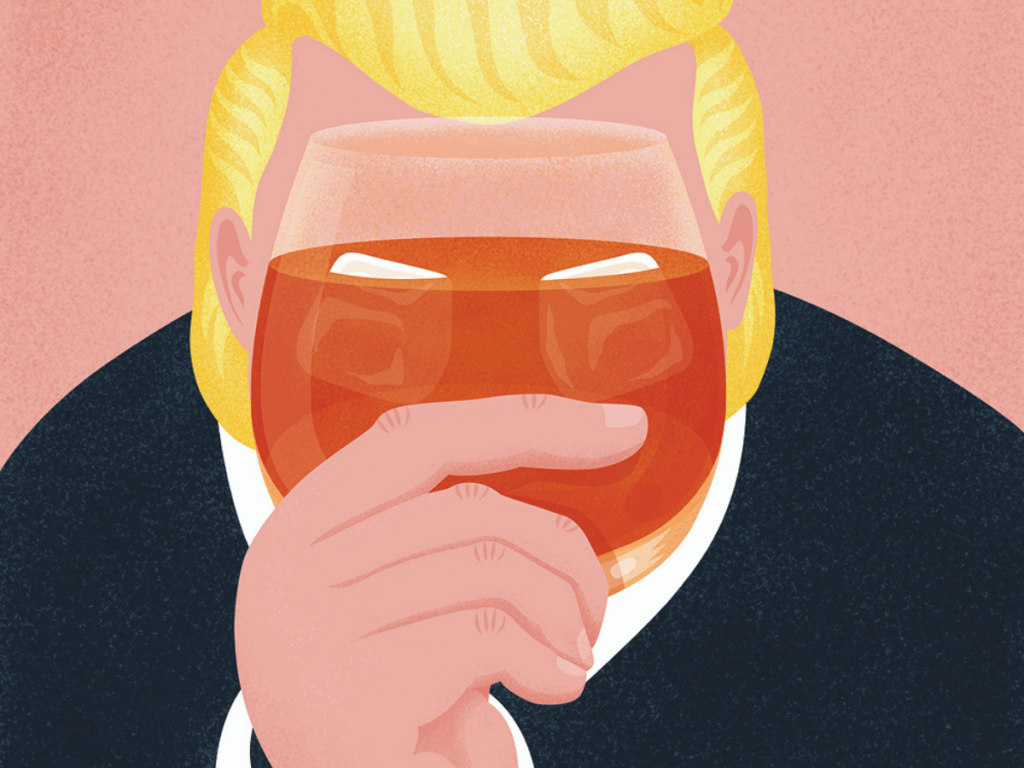
Illustration by Julia Kerschbaumer for Whiskeria
Scotch whisky has long been a target for countries which set tariffs to protect their indigenous products. Much of the Scotch Whisky Association’s time is devoted to contesting these impediments to trade but what is happening now, in the trade war with the United States, is significantly different.
Martin Bell of the SWA explains: “I’ve been in this area of work for 16 years and have seen a fair number of international trade disputes in the World Trade Organisation where the EU has taken cases to prevent tax discrimination against Scotch and other imported spirits.
“I’ve tended to focus primarily on Asia-Pacific as that’s where most of the problems have arisen. What makes the US situation different is that this is the first time Scotch whisky has been caught in the middle of an unrelated trade dispute.”
Unrelated, indeed! The innocent bystander is likely to wonder why whisky should be collateral damage for an American grievance about state subsidies to Airbus or, before that, to steel and aluminium production within the EU. But that’s the way trade wars work and, as with all wars, there are innocent victims.
A country which thinks its domestic industries are suffering because of subsidies to a rival can go to the WTO which, if it upholds the case, will set an upper limit on the value of retaliatory sanctions, based on the alleged damage done to the complainant’s own industries. It is then open season to decide which products to target.
I had first-hand experience of this capricious process when I was UK Trade Minister and the Americans were upset about EU subsidies to Caribbean banana producers. The WTO upheld their complaint. America doesn’t actually grow bananas, but some influential corporations have huge plantations in countries like Ecuador and Colombia.
The office of the US Trade Representative wanted to target Scotch whisky at that time, but the value was too high to fit within the cap set by the WTO. So, they went for cashmere knitwear instead, among an eclectic range of EU products – none of them anything to do with bananas. The whole thing only went away when the WTO drastically reduced the value of permitted retaliation, but not before a lot of damage had been done.
Now, it’s as if the USTR has been lying in wait for 20 years to snare Scotch whisky in this dispute. A 25 per cent tariff on single malts and whisky liqueurs poses a particular threat to small distilleries which produce little or nothing for the blended market. Single malt exports to the US are down by a quarter since the tariff took effect last October, though the full effects have not been felt because a lot of stockpiling went on in the preceding months.
Irony is probably lost on President Trump but the SWA’s biggest allies are producers of American whiskey who are caught up in the tit-for-tat logic of a misguided war. Martin Bell says: “We are fully aligned because they, of course, are feeling the pain through a drop in imports into Europe. There is also cross-ownership between the two industries and the biggest irony is that the most significant import for the Scotch whisky process is bourbon casks – worth $70 million a year – from the United States.”
The problem for American producers goes beyond the dispute with the EU, since Trumpian trade wars also involve the USA’s North American neighbours, Canada and Mexico, as well as China. The Distilled Spirits Council of the US warned: “The imposition of these tariffs by our major trading partners threatens to seriously impede export progress that has benefited our sector and created jobs across the country.” In an election year, that can be a powerful message in states like Kentucky and Tennessee, where the spirits industry is concentrated.
American attachment to protectionism via tariffs and trade wars has a pedigree which dates backs to the earliest days of independence. The second piece of legislation passed by the US Congress in 1789 was the Tariff Act which set a levy on imports from other countries. It was integral to the new democracy’s mindset that America’s economic potential had been held back by the British who wanted it as a source of raw materials but not a competitor in manufactured goods.
To a large degree, disputes about trade and tariffs defined American politics and wars throughout the 19th century and well into the 20th. It was under the umbrella of protectionism that America became the largest and most powerful economy in the world. Inevitably, however, the cycle began to repeat itself. As other economies developed, the arguments for free trade became stronger. The shared interest was in open markets.
The last stand for pure protectionism came in 1930 when, in the face of many warnings, the US Congress passed the infamous Smoot-Hawley Tariff Bill, thereby enshrining in history the names of two otherwise undistinguished legislators. The bill raised tariffs on over 20,000 goods to protect American industry and agriculture. It was a complete disaster. As the economist John Kenneth Galbraith wrote: “Even the Swiss were moved to seek limitations on American imports in response to an increased tariff on Swiss watches.”
Over the next four years, world trade decreased by 65 per cent, unemployment soared and Smoot-Hawley made the Great Depression infinitely worse than it might otherwise have been. Franklin D. Roosevelt ran his 1932 presidential campaign on a platform of lowering tariffs and won. Thereafter, America adopted a more pragmatic approach and ultimately became a supporter of a rules-based global system.
However, the history of protectionism ran so deep in the American psyche that the conversion to free trade remained fragile – particularly with a populist like President Trump in the White House. “Trade wars are good because they are so easy to win,” he declared. Tell that to the bourbon makers of Kentucky!
To return to Scotch whisky, Smoot-Hawley had another unintended consequence of historic significance. It effectively brought to an end the era of Prohibition. By 1933, the American economy was in such dire circumstances that the revenues from liquor consumption were deemed essential. It was also pretty clear that Prohibition was not working – there were estimated to be 20,000 speakeasies in New York alone, and bootlegging had spawned the great gangster syndicates of the era.
Neither had 13 years of Prohibition hugely inconvenienced Scotland’s enterprising whisky distillers. They quickly put in place a network of exports to neighbouring territories, where the whisky was taken charge of by the American bootleggers. In 1922, for example, the French islands of St. Pierre and Miquelon, off the coast of Newfoundland, imported 119,000 gallons of Scotch, which might have raised eyebrows as the territories had a combined population of 6,000 people.
By all accounts, Scotch emerged stronger from Prohibition than when it began, as the gangsters who controlled the illegal market had been careful to maintain the exclusivity of the product and the premium price it could command. By 1938, the United States – nominally “dry” until five years earlier – accounted for 60 per cent of all Scotch whisky exports.
By comparison to these great events, the current stand-off may prove to be a mere blip in the long relationship between American politics and Scotch whisky. Donald Trump has never shown much interest in his strong Scottish roots except when building or acquiring golf courses.
But if his mother, born and bred on the Isle of Lewis, was still around, she might conceivably ask him: “Donald, why is Scotch whisky by far the biggest single victim of your sanctions against the European Union, in a dispute that has nothing to do with it?” Just conceivably.
Disputes about trade and tariffs defined American politics and wars throughout the 19th century and well into the 20th. It was under the umbrella of protectionism that America became the largest and most powerful economy in the world.
 4.7/5 with 10,000+ reviews
4.7/5 with 10,000+ reviews

